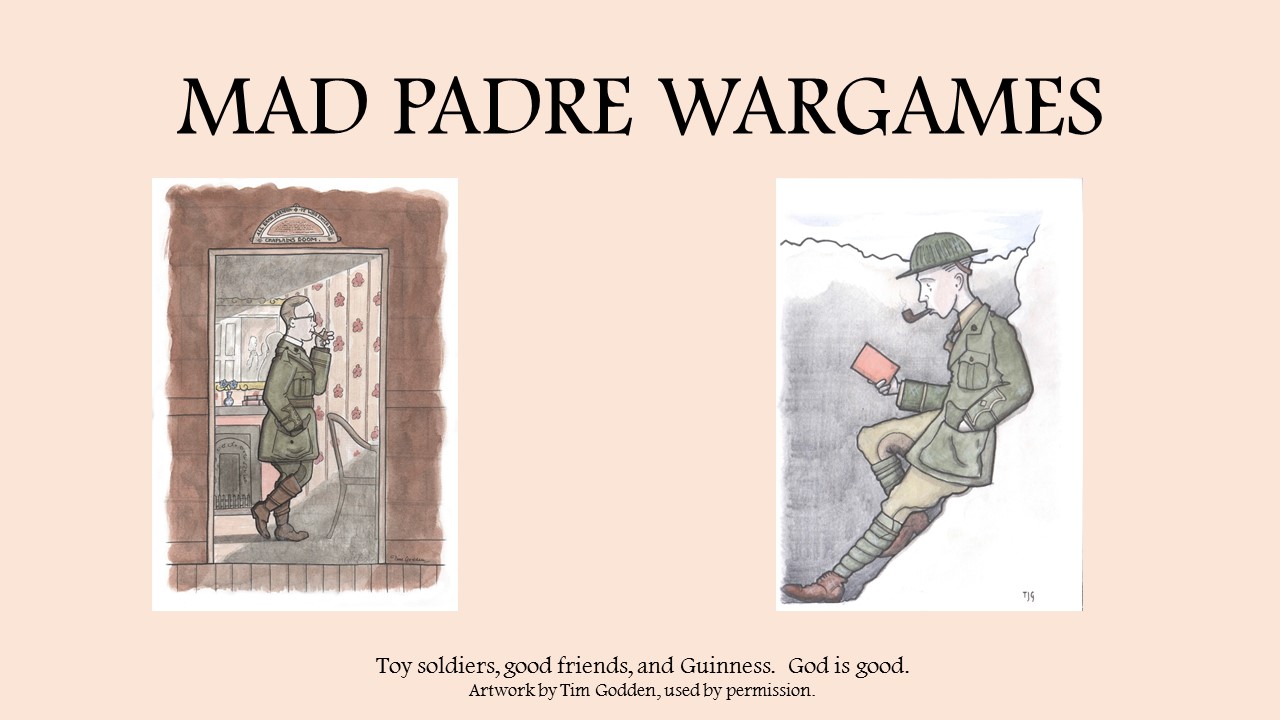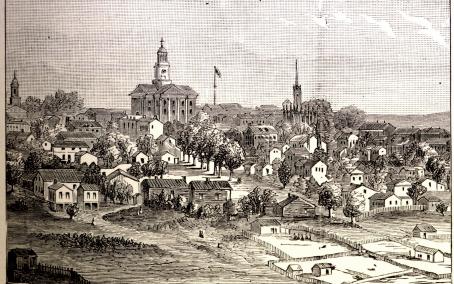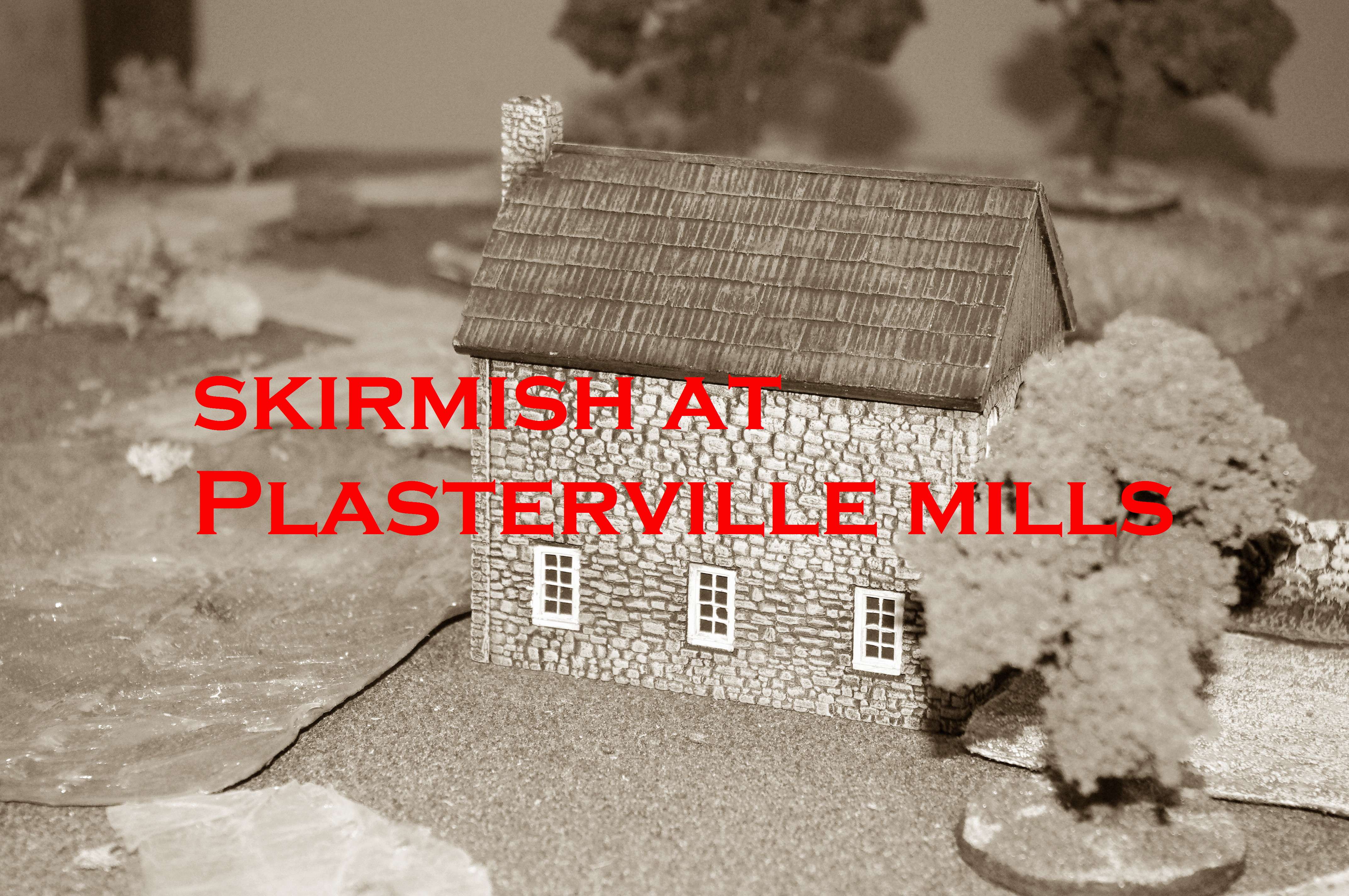
For the last few days my gaming table has represented a quiet and idyllic part of Virginia known as Plasterville Mills. The name Plasterville comes from the this sweet little HO model railroad kit, a hydrocal old stone mill from
C.C. Crow that I bought years ago somewhere. A while back I found the nerve to put it together, which was a bit nerve wracking as the wall and roof sections were cast from single pieces of hydrocal, exquisitely detailed but rather delicate. A further fiddly step was cutting balsa pieces for the upper story just under the roof peak. A unique and lovely model just begging to be used as American Civil War scenery.
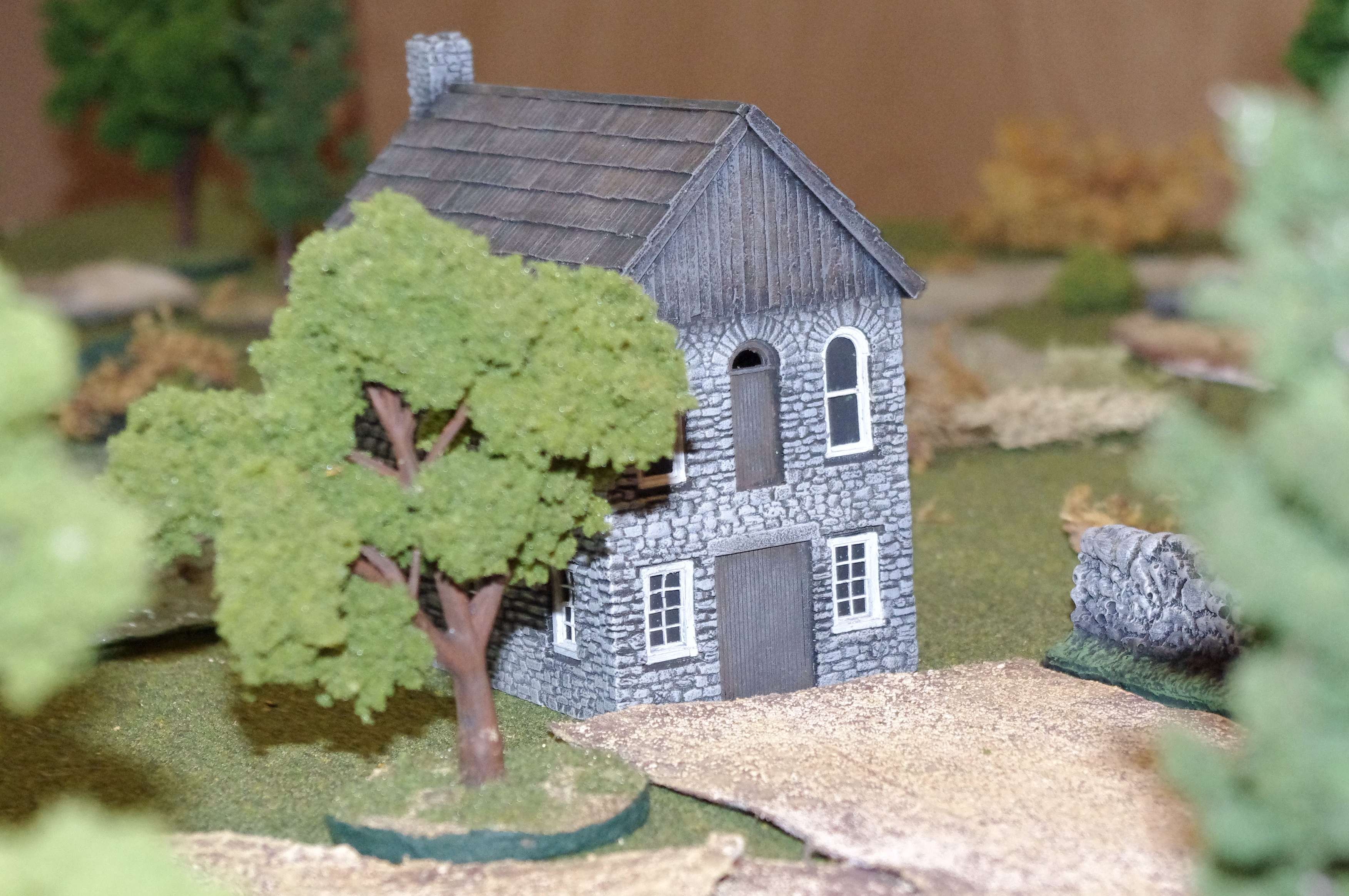
After laying out a rural American table with the appropriate mill stream , I wanted to try out the Too Fat Lardies ACW skirmish rules, Terrible Sharp Sword. I'd never played it before but was encouraged by all the AARs posted in the Lardy blogosphere. To create an element of surprise, borrowing on the Platoon Forward system, I gave each side four blinds, with one a dummy to be diced for randomly as they were spotted. Also, for each side I have given the three groups under blinds a variable number of men depending on a 2d6 role as the blinds came off and the troops went on the table. The Federals were rated as Average troops with Polished Drill and Poor Shots. The Confederates were Average troops and Average shots. Also, both sides have a Level 1 and Level 2 Big Man, whose locations are to be determined randomly.
The premise of the battle was that Plasterville Mill was stuffed full of tasty vittles which the rebel quartermaster wanted badly. A Union patrol had come across the rebs at the mill and was determined to drive them off. The game would end after the Blank Card came up ten times, and at the time whoever controlled the mill would be the winner.
Here is the table with the initial placement of Union and Confederate blinds. A fourth rebel blind was out of view to the left of the frame below, but it was quickly revealed as the rebel dummy blind. The Union plan was to drive up the road and take the hill in the centre, while on the far side of Plasterville Creek the fourth blind would try to get up to the stone bridge and come in from behind the defenders of the mill.
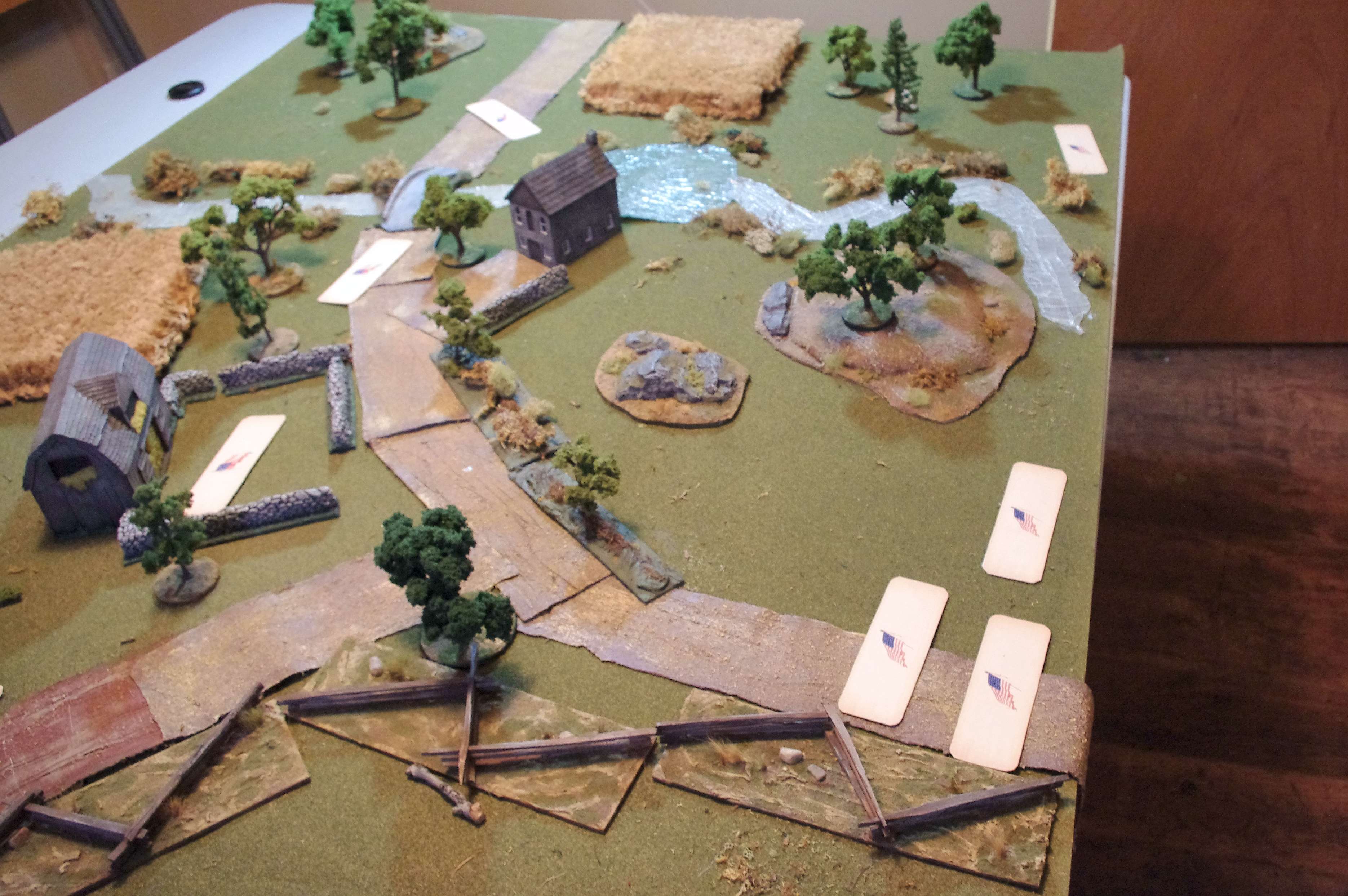
The first spotting rolls are successful. Eight rebs with a Level 2 Big Man, Lt. McComber, are located in the barnyard watching the road. Coming up the road toward them are 11 Yanks under their Lvl 2 BM, Lt. Sam Skeffington.

Lt. Skeffington, a contemplative sort, regards the rebs in the barnyard. "They look fixin' to be stayin', reckon we'll have to drive 'em off", he drawls. He is a Redoubt figure, painted as an artillery officer. Reckon I need to paint up some more single based leader figures if I want to play more TSS. Beside him are some ancient Minifigs, and his sergeant is a RAFM figure.

"Give 'em thunder, boys!" Lt. McComber has had his troops shift left to take advantage of that nice stone wall, and now they fire their first volley at the right oblique. Two Yanks drop, and the shock begins to add up on Skeffington's group. That barn is a Hovels miniature, which I am quite pleased with.
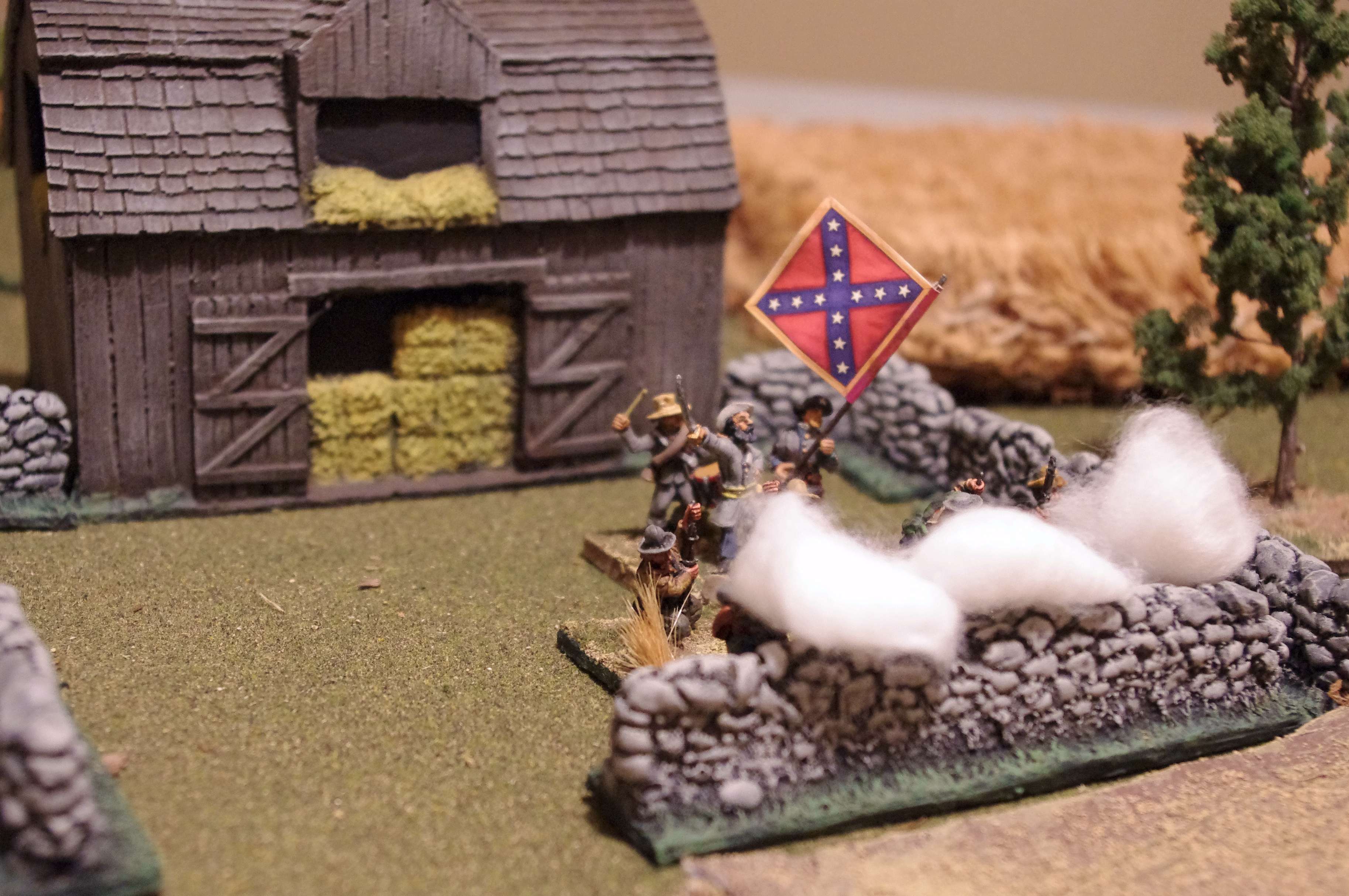
The second Yankee group emerged from the tree cover on the hill facing the Mill, and never got farther. They were too far away from Lt. Skeffington's range of influence to move, and could only trade fire with the defenders of the mill on the Sasparilla Card. Those are more Minifigs on the hill, by the way.

Unfortunately for the Yanks on the hill, they were facing twelve determined rebs under Sgt. Branston (Lvl 1 BM), also hiding behind a stone wall. This cover advantage halved the fire of the Union troops, and in the unequal duel that followed, the Yank casualties began to add up.

On the Union right, the outflanking plan was going slowly. The fourth Union blind, which turned out to be Sgt. Bill Haney (Lvl 1 BM) and 12 men, had missed several chances to move and time was running out. Finally the Feds got lucky and the fourth blind pushed into the field of .... hemp? doormat? As they emerged, they were automatically spotted by the last Reb blind, nine men who immediately opened fire. Their muskets dropped two of Haney's 12 men, but he pressed on.
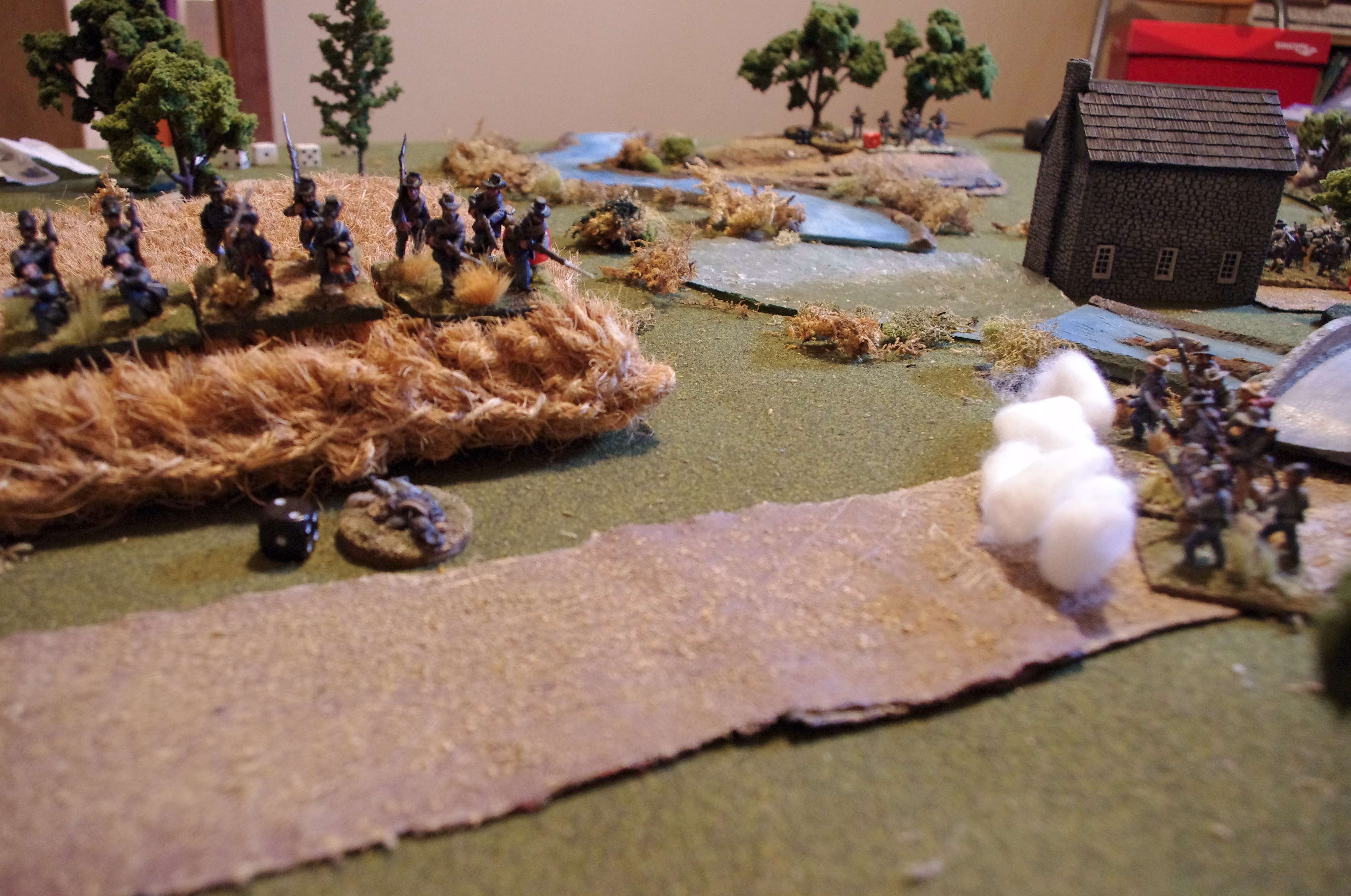
As the Union's time for victory ebbed away, Lt. Skeffington urged his troops on the road to push on and clear the courtyard, hoping that Haney would come through on the other side of the stream. The odds were against him. A Random Event meant that his men were moving slowly in the infernal heat, their canteens empty. Worse, they were now down to 8 men and the shock was piling up. The Yanks stumbled forward after Skeffington, but not fast enough. Sgt. Branston, seeing that the bluebellies on the hill were no threat, shifted he men right to bring fire on the Yanks stumbling forward. Had the game continued, it's doubtful that Skeffington's men would have stood.
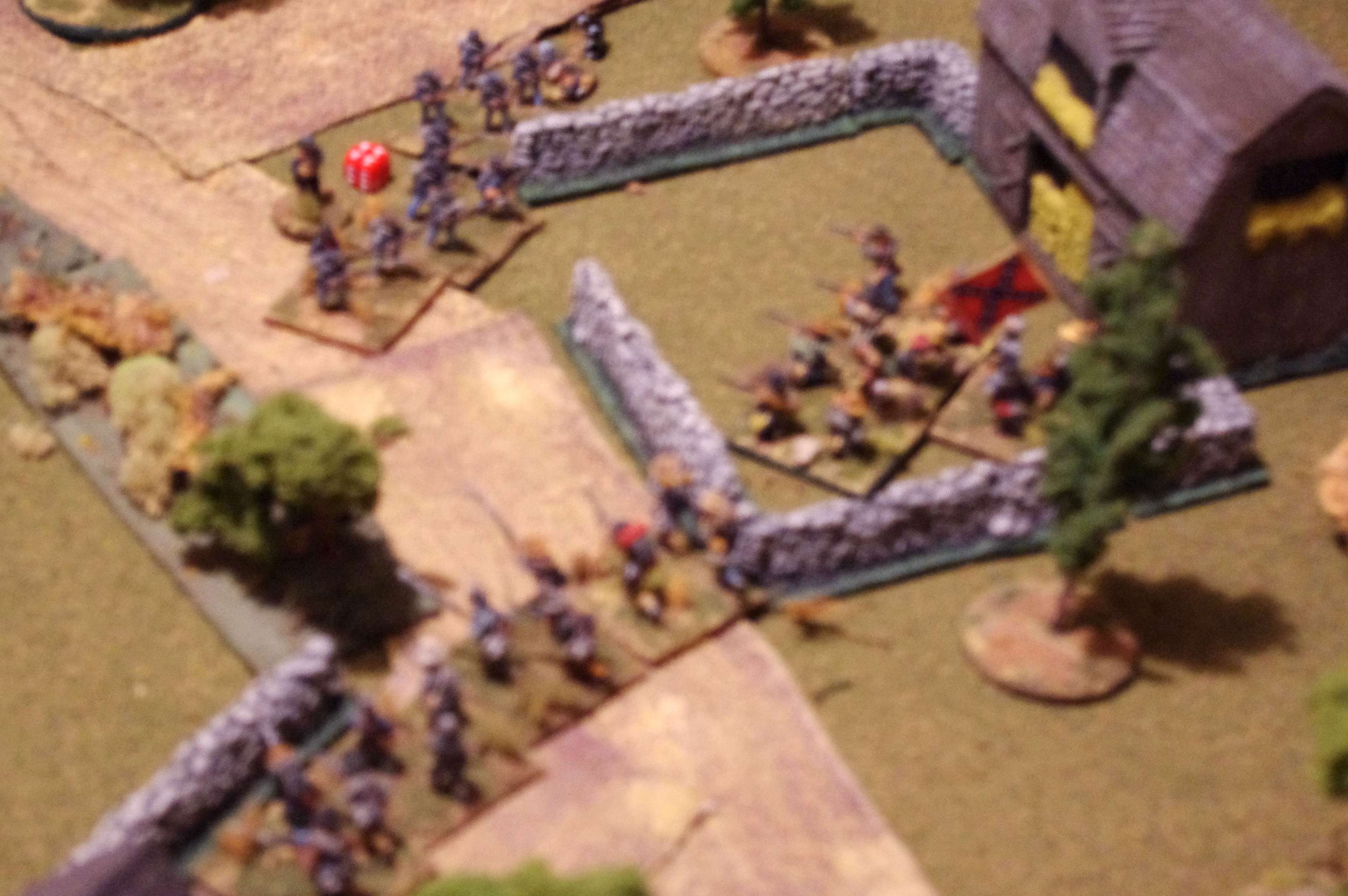
It all came down to Sgt. Haney. He led his men forward in a charge, but rolled an abysmal "3" on 2d6 and came up short. The rebs fired, but their musketry missed! Haney was set to move again, but never got the chance. Time was out, the final Sasparilla card came up, and both sides fired a final volley at the other.
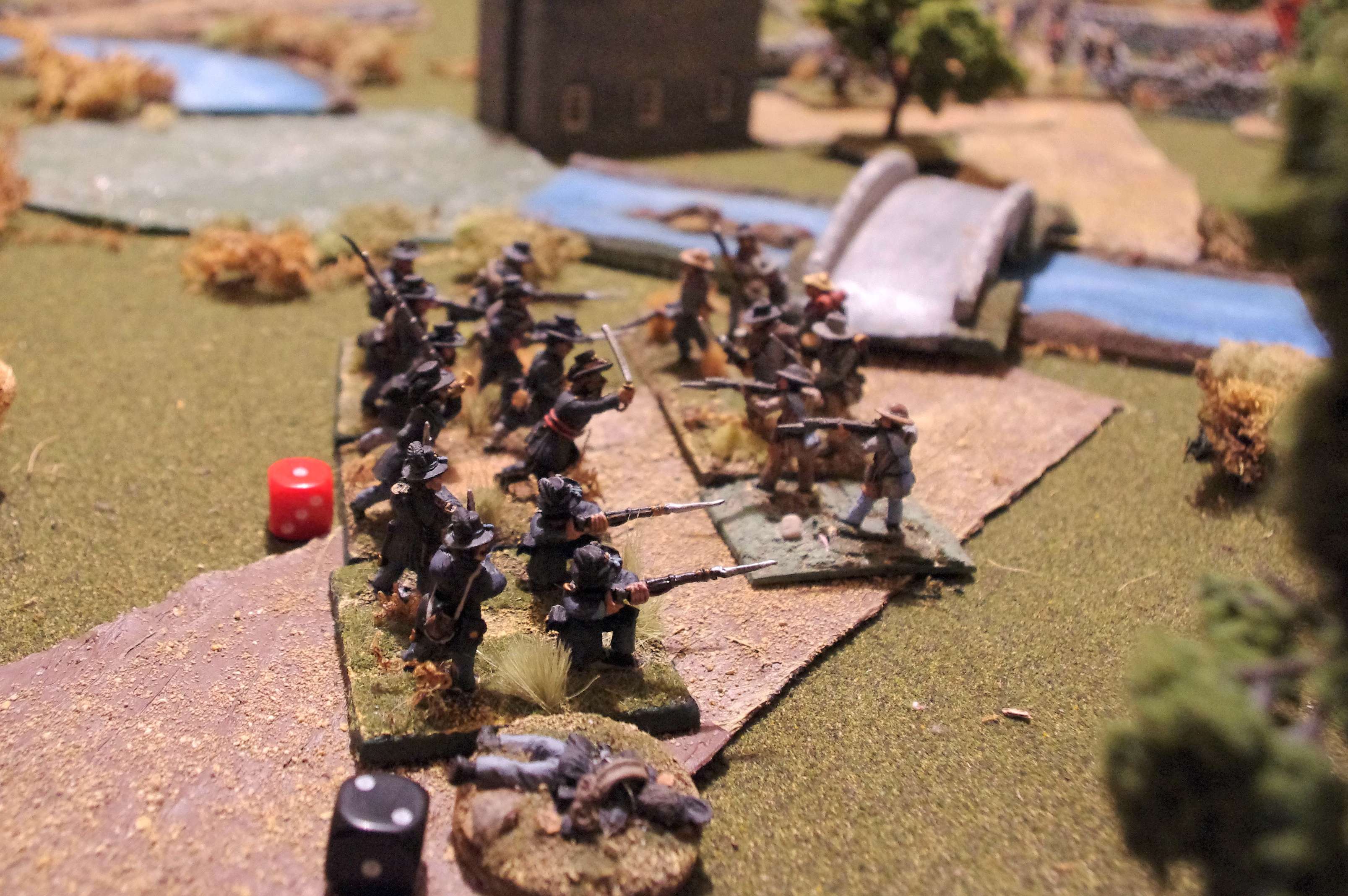
The rebs firmly held Plasterville, and had lost only one man to the Union eight. Johnny Reb would eat well tonight.
In retrospect a great game and very clean and fairly simply rules. I need to read the Bonus Card section more carefully (no Bonus cards were used in this game). Also, I failed to realize until late in the game that Polished troops could skirmish, which may have given the Yanks an advantage. I need to try these rules again shortly, which, seeing as they'll be some small unit actions in the Bluffsburg campaign, will be soon I am sure.

